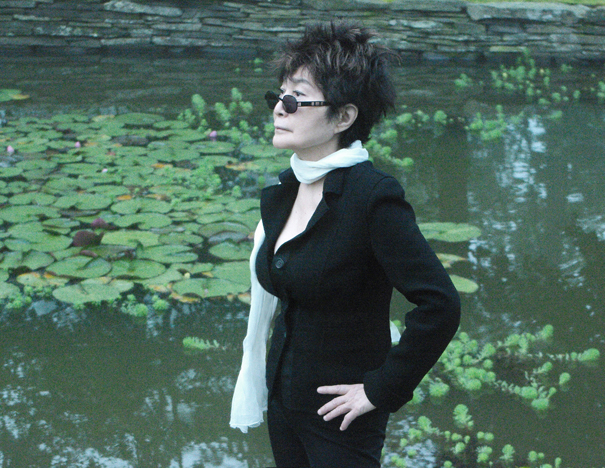Born 1933 in Tokyo, based in New York.
From the beginning of her career, Yoko Ono was a conceptualist whose work encompassed performance, instructions, film, music, and writing. By the late 1950s, she had become a recognized contributor to New York's avant-garde art activities, and her reputation for thought-provoking work that challenges people's understanding of art and the world around them has remained constant.
In 1960, she opened her Chambers Street loft to a series of radical performance works, and realized some of her early conceptual works there. In 1961, she had a solo show at the legendary AG Gallery in New York of her Instruction Paintings, and later that year performed a solo concert at Carnegie Recital Hall of revolutionary works involving movement, sound, and voice. In 1962, she returned to Tokyo, where she extended her New York performance at the Sogetsu Art Center, and showed her Instructions for Paintings there. In 1964 Yoko Ono performed Cut Piece in Kyoto and Tokyo, and published Grapefruit.
From the mid 1960s onwards, there has been great interest in Ono's work internationally. She has made a number of films and has had numerous exhibitions in prestigious museums around the world. In 2011 alone she held four solo exhibitions in Tokyo, New York and Japan.
At the 2009 Venice Biennale, she received the Golden Lion for Lifetime Achievement. On the occasion of her exhibition "Road of Hope - Yoko Ono 2011" at the Hiroshima City Museum of Contemporary Art, she was honored with the prestigious 8th Hiroshima Art Prize for her dedicated peace activism. This year, she was given the Oskar Kokoschka Prize 2012 in Vienna, Austria.
In 2007, she created the permanent installation IMAGINE PEACE TOWER in Iceland, and continues to work tirelessly for peace with her IMAGINE PEACE campaign. For further details, see www.imaginepeace.com

|
photo : (c) Synaesthete courtesy of Yoko Ono |





